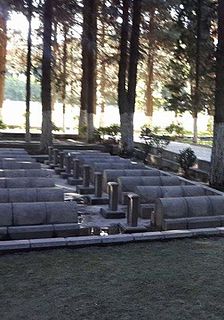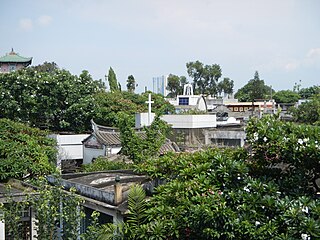 W
WThe Gilgit Chinese Memorial Cemetery, locally known as the China Memorial, is a graveyard located in Danyor, Gilgit–Baltistan, about ten kilometres away from the capital city of Gilgit across the Gilgit River. The cemetery, established in early 1970, serves as the final resting place of Chinese workers and engineers who died during the construction of the Karakoram Highway (KKH) in Pakistan throughout the 1960s and 1970s. The tombstones placed over the graves contain epitaph inscriptions in Chinese characters.
 W
WChinese Cemetery, also known as Chinese Cemetery, Warren Mining District, is a cemetery located near Warren, Idaho. It is the only ethnic Chinese cemetery in Idaho that is listed on the National Register of Historic Places and was listed on March 29, 1994. The cemetery was created to hold the remains of Chinese migrant laborers who came to Idaho to work as miners, though many of the bodies have since been exhumed and returned to China.
 W
WThe Chung Wah Cemetery, also known as China Mission-Chung Wah Chinese Cemetery, in Folsom, California is a cemetery from 1906.
 W
WConcordia Cemetery is a burial ground in El Paso, Texas. It is known for the being the burial place of several gunslingers and old west lawmen. The first burial took place in 1856. There are between 60,000 and 65,000 graves in the cemetery. Concordia is the only place to have a Chinese cemetery in Texas.
 W
WEvergreen Cemetery is a public cemetery located on Evergreen Street in Santa Cruz, California and was established in the 1850s. Since 2008, the Evergreen Cemetery is under the management of the Santa Cruz Museum of Art and History (MAH).
 W
WThe Manila Chinese Cemetery is the second oldest cemetery in Manila after La Loma Cemetery. The cemetery includes Christian, Buddhist and Taoist burials. The present-day cemetery is a vaguely trapezoidal area of about 54 hectares with an irregular network of roads its old pre-war part along Rizal Avenue Extension, reflecting its gradual evolution and expansion. Meanwhile, the post-war portion has three major roads bisected by minor roads, aligned NW to SE. Matandang Sora, coming from the main entrance in Felix Huertas going towards Chong Hock Temple, is the main road today. Before the Pacific War the main entrances faced Avenida Rizal. This northwestern is the oldest and most historically significant part of the cemetery. The cemetery was witness to many executions during World War II. Among them were Girl Scouts organizer Josefa Llanes Escoda, Filipino Brigadier General and hero during World War II and Boy Scouts of the Philippines charter member Vicente Lim, literary geniuses Rafael Roces and Manuel Arguilla, star athlete-turned-guerrilla spy Virgilio Lobregat, and Chinese Consul General Yang Guangsheng. Apolinario Mabini was also buried in the cemetery before his remains were transferred to Batangas on July 23, 1956.
 W
WMelaka Warrior Monument, officially the Melaka Warrior Monument for the Chinese victims of Anti-Japanese occupation is a monument at Bukit Cina in Malacca City, Malacca, Malaysia. The monument was built to commemorate the Chinese victims of the Empire of Japan occupation of Malacca as part of British Straits Settlements during World War II. The monument is inscribed with four Chinese characters, "忠貞足式" in Chiang Kai-shek's handwriting, which means "their loyalty can be taken as an exemplar".